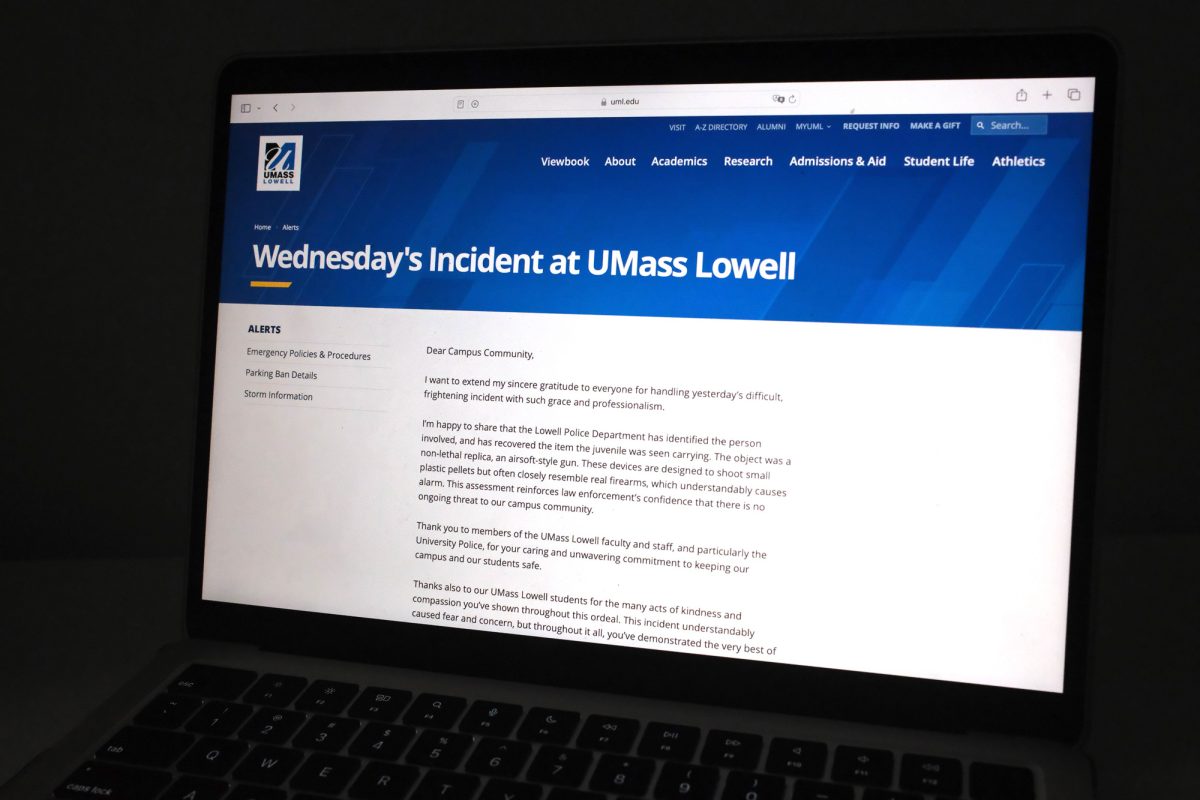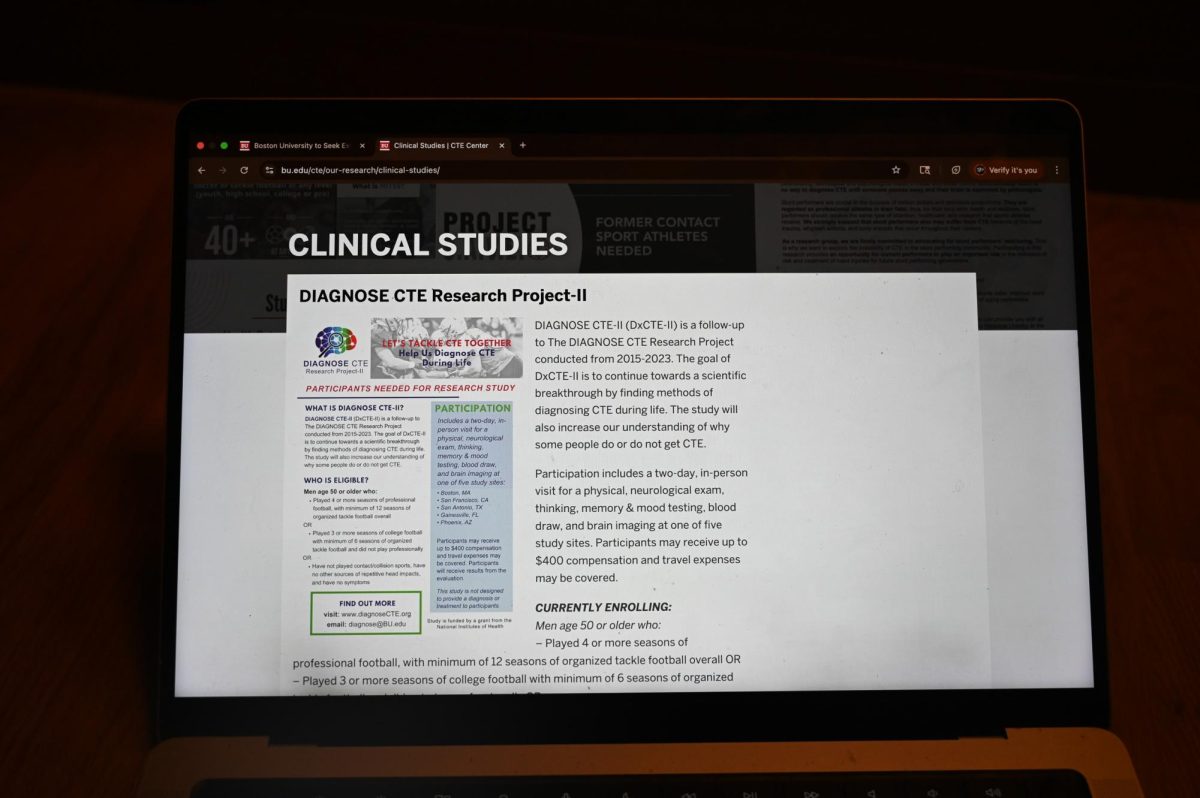It is not unheard of for someone to walk down Commonwealth Avenue late on a weekend night and see a student or local stumble or fall because of intoxication. However, a study published in the December issue of the journal Alcohol from the University of Illinois at Chicago suggests the same intoxication that causes accidents might also lower the mortality rates of victims.
Benefits of Intoxication
There is a strong correlation between blood alcohol level and a sort of “protective effect” that lowers mortality rates among trauma patients, according to the study.
“I was actually kind of surprised by the finding of this protective effect,” said lead researcher Lee Friedman over a phone interview. “Now, the more that I’ve looked into it, it actually makes sense.”
Trauma patients often experience a cascade of after-effects following an accident, ranging from severe loss of blood from blood vessels to heart complications to kidney failure, Friedman said. It is the latter two — heart and kidney complications — that usually result in death.
“You generally don’t die from the trauma,” he said. “You die from the cascade of physiological responses to the trauma.”
Friedman said he is working on a new study to figure out how alcohol protects the drinker. His preliminary findings have already offered some interesting possibilities.
Alcohol is known to increase the viscosity of cells, or their resistance to movement, Friedman said. As cells like those in the blood become more viscous, blood becomes more unwilling to move. Thicker blood might allow victims to retain more blood after injury. With a higher blood volume, the heart is able to circulate the blood more efficiently, ensuring it continues to reach vital organs.
Alcohol is also known to increase heart rate and the overall function of the heart itself, Friedman said. This not only helps the heart to circulate lowered volumes of blood to vital organs, it might also aid in the prevention of heart and even kidney complications by supplying enough blood to the kidneys.
All of these possibilities are only speculations at the moment, Friedman said. The real cause for the correlation of elevated BAC and lowered mortality rates is unknown, and Friedman is not certain that alcohol is really the root cause.
New Approach
As an injury epidemiologist, Friedman studies how injuries are distributed among the population and investigates possible causes so that they can be prevented. Since substance abuse often leads to injury, he said that he spends a good amount of time studying alcohol, which is what led him to this study.
Friedman said he began by looking at a population-based trauma registry in Illinois, considering all patients treated in Level 1 or Level 2 trauma units from 1995 until 2009. He then broke the patients into subgroups and studied patients who were issued toxicological exams upon admission to the trauma center. To control the study, he omitted several groups of patients to account for other forces besides alcohol that may have benefitted patients.
A unique aspect of the study, Friedman said, was the novelty of including each BAC. While previous studies often used arbitrary cutoffs like .08 (the legal limit in Illinois), Friedman said his used no such limitation. Instead of considering all those under .08 sober and all those over .08 intoxicated, Friedman said he considered all levels of intoxication, from a blood alcohol level of 0 to .5. (For reference, blood alcohol levels above .35 can be fatal.)
Because of their arbitrary limits, no studies have presented consistent findings until now, Friedman said.
“Based on the model that I ran it seems like it’s a linear effect,” said Friedman. “The more [alcohol] you have, the more of this ‘protective effect,’ but even at the lowest levels, you see a modest reduction in mortality.”
Debunking Some Myths
While it sounds unlikely that alcohol could actually save a person’s life, not all injuries are necessarily aided by high blood alcohol content, Friedman said.
Burns, for instance, were the exception to the rule in Friedman’s study. Of all the trauma patients, burn victims were the only ones whose mortality rates did not decline as blood alcohol content increased. This is actually a clue to the reality behind the results, Friedman said.
Burns affect fluid transmission, Friedman said, both at the cellular level and between organs, which is what makes them so fatal. If, then, the thickness of the blood and fluids is raised by alcohol, it will be excessively difficult for the body to keep up blood circulation and fluid transmission, and alcohol might actually be detrimental instead of an aid.
Penetration victims, on the other hand, Friedman said benefitted the most from alcohol. Victims of stabbing and gunshot wounds, which result in the loss of blood, benefit largely from increased heart function, keeping the blood circulating to vital organs.
Friedman said alcohol is too complex a substance to be involved in a simple cause-effect relationship.
“It works differently on different systems of the body,” he said, “and there is going to be a negative effect from alcohol and a positive effect. My guess is that what we’re seeing is the net effect.”
Application and Reaction
Students on campus had mixed reactions to Friedman’s results.
“I’m hesitant because correlation doesn’t always imply causation,” Carina Traub, a freshman in the School of Education said.
She said she has high hopes for the results of Friedman’s current work, though.
“I’m glad that he’s doing secondary things … maybe we can then break down the stuff that’s in alcohol and use it to help people,” she said.
Other students said they disagreed.
“To see that it has positive health effects doesn’t really surprise me,” College of Engineering sophomore Evan Ramos said. “It’s just part of culture. People have been consuming alcohol in different forms for centuries and it hasn’t really had a negative connotation in historical context.”
Some students expressed unease about the effect the results might have on students.
“Students will think — or just underage people in general — that if they drink, they won’t get in as much trouble, or they’ll drunk drive and stuff,” Brian May, a College of Arts and Sciences freshman, said.
Students said they did not believe this study should affect student behavior.
“I think it’s interesting,” CAS sophomore Christopher Stenson said. “I don’t think it’s a reason to drink more.”
Continuing Research
Friedman is working on a new study that uses the same methods to examine about 100 complications that kill the majority of trauma patients. Though only in its early stages, Friedman said he has already seen promising preliminary findings.
He said it might be a few months or even a few years before the public sees the next published results, but he said he is hopeful that he will find stronger correlations between alcohol and increased rate of survival.
“Probably all of the evidence is there,” he said, “we just need to piece it together.”





















































































































